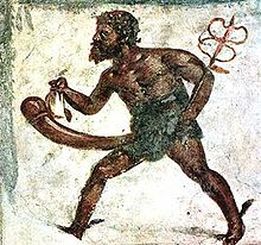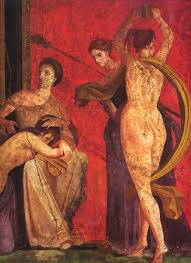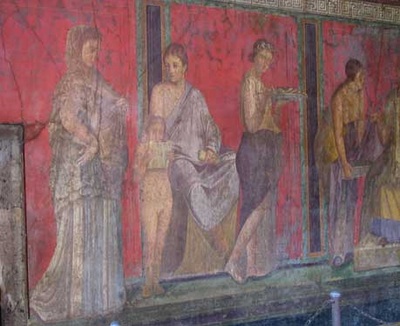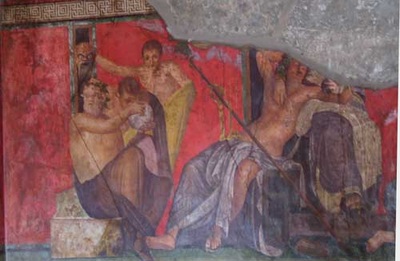erotic art in pompeiiIn Pompeii, Frescoes considered to be great works of art frequently contain depictions of naked men and women, while nude statues are also common. Erotic art in Pompeii and Herculaneum was discovered in the ancient cities around the bay of Naples after archaeologist had found erotic images, objects such as coins,statues and symbols. Most of the Arts and Mosaics had a sexual theme to it. In the 1819s, when King Francis I of Naples visited the Pompeii exhibition at the National Museum with his wife and daughter, he was so embarrassed by the erotic artwork that he decided to have it locked away in a secret cabinet, accessible only to the "people of mature age and respected morals". He repeatedly Re-opened, closed, and re-opened again for nearly 100 years, it was briefly made accessible again at the end of the 1960s.
|
SignificanceAncient Roman art is significant as it helps us to gather information about how people lived their lives. In almost every culture throughout the world, through centuries and through histories, phallic symbols have figured in the lives of people everywhere. The actual symbol itself has its different meaning but it has stayed relatively consistent: power, fertility and sex. Through its arts and its histories, these objects hold a key to understanding not only the long gone inhabitants, but ourselves.
|
There are numerous sexually explicit paintings and sculpture from the ruined Roman buildings in Pompeii and Herculaneum. In the "Villa of the Mysteries", there is a ritual scene that is associated with a religious cult and this image can be seen as having religious significance rather than sexual. On the other hand, graphic paintings in a brothel advertise sexual services which are seen above each door of Roman Buildings. In Pompeii, phalli and testicles engraved in the sidewalks were created to aid visitors in finding their way by pointing to the prostitution and entertainment as well as general decoration. The Romans considered depictions of sex to be decoration in good taste. Sex acts that were considered taboo were depicted in baths for comic effect.
|
In Pompei, Ancient Romans believed that Sex was a great way to enjoy oneself and others, and while the stereotypical Romans were most likely not part of daily life, certainly sex was acceptable, practiced, and celebrated.
|
This video gives an visual background about the Erotic arts distributed across Pompeii and Herculaneum.
Erotic objectsObjects found located in Ancient Roman times were all to do with sexual intercourse. In Pompeii, The Ancient Roman oil lamp (which was found in the 1st Century AD) depicting woman having sexual intercourse with two men simultaneously. In Ancient Roman times men were seen as the dominant ones, It was acceptable for a women to own a business if her husband or father had left it to her upon his death, she could distribute political material, or be a prostitute.
|




